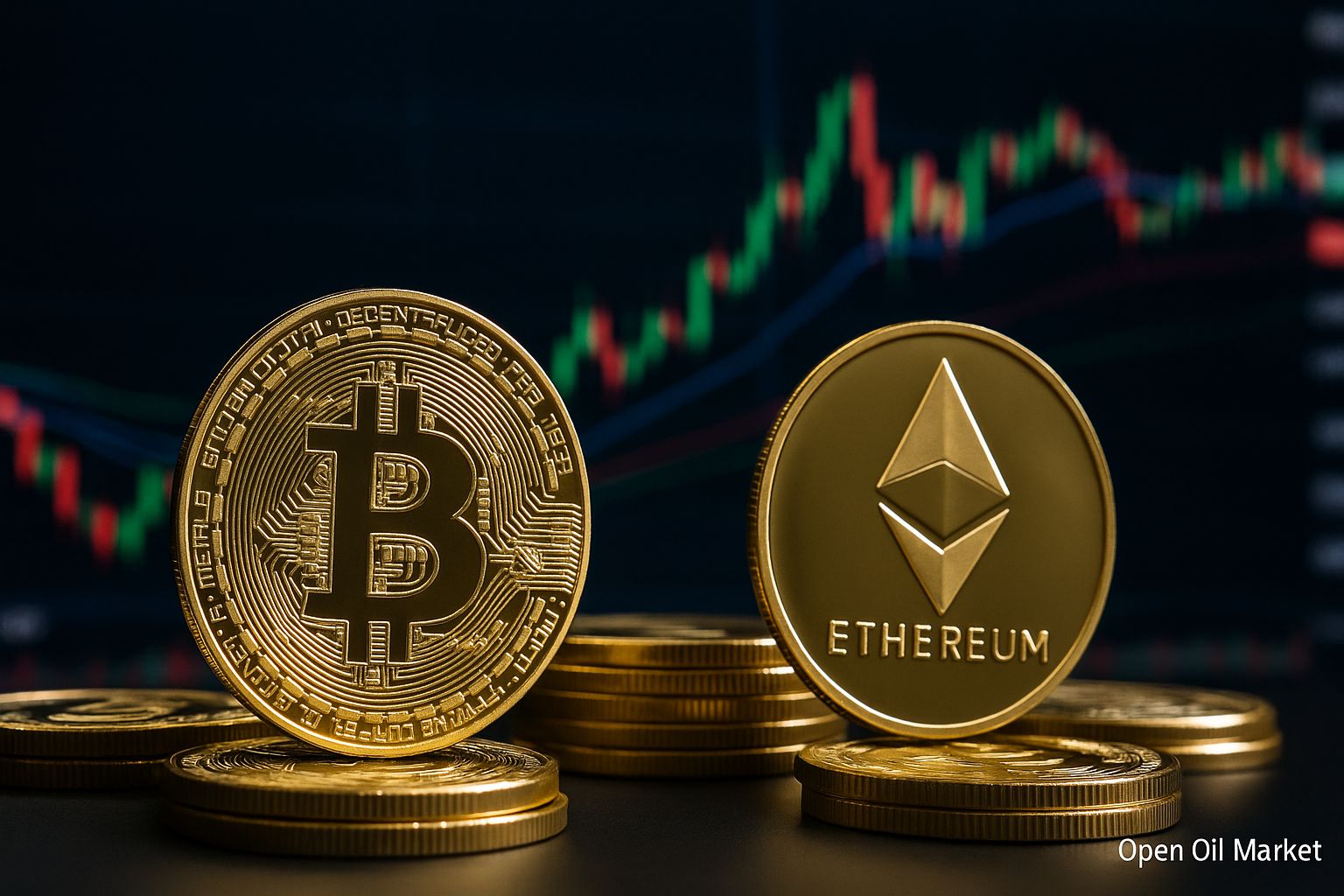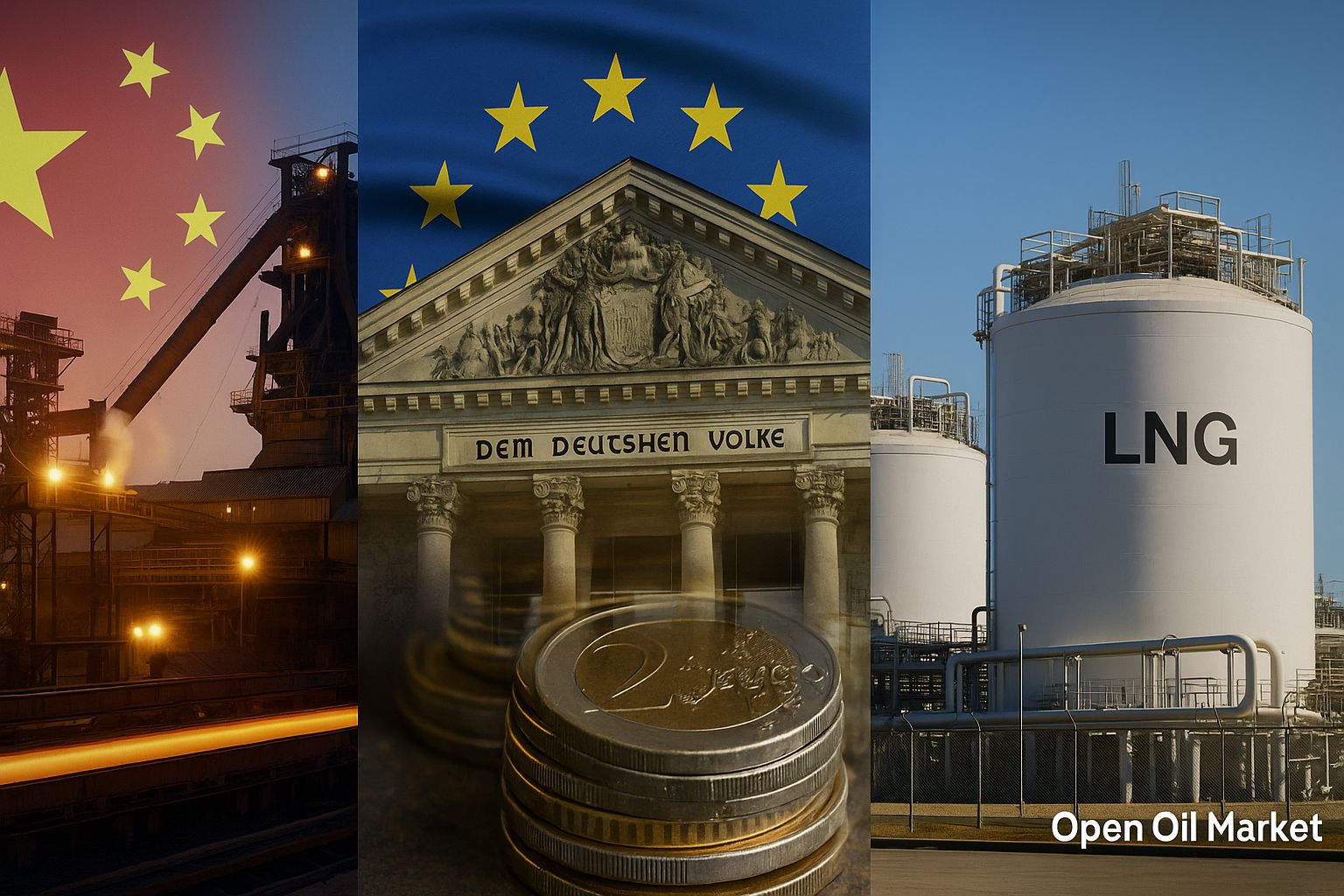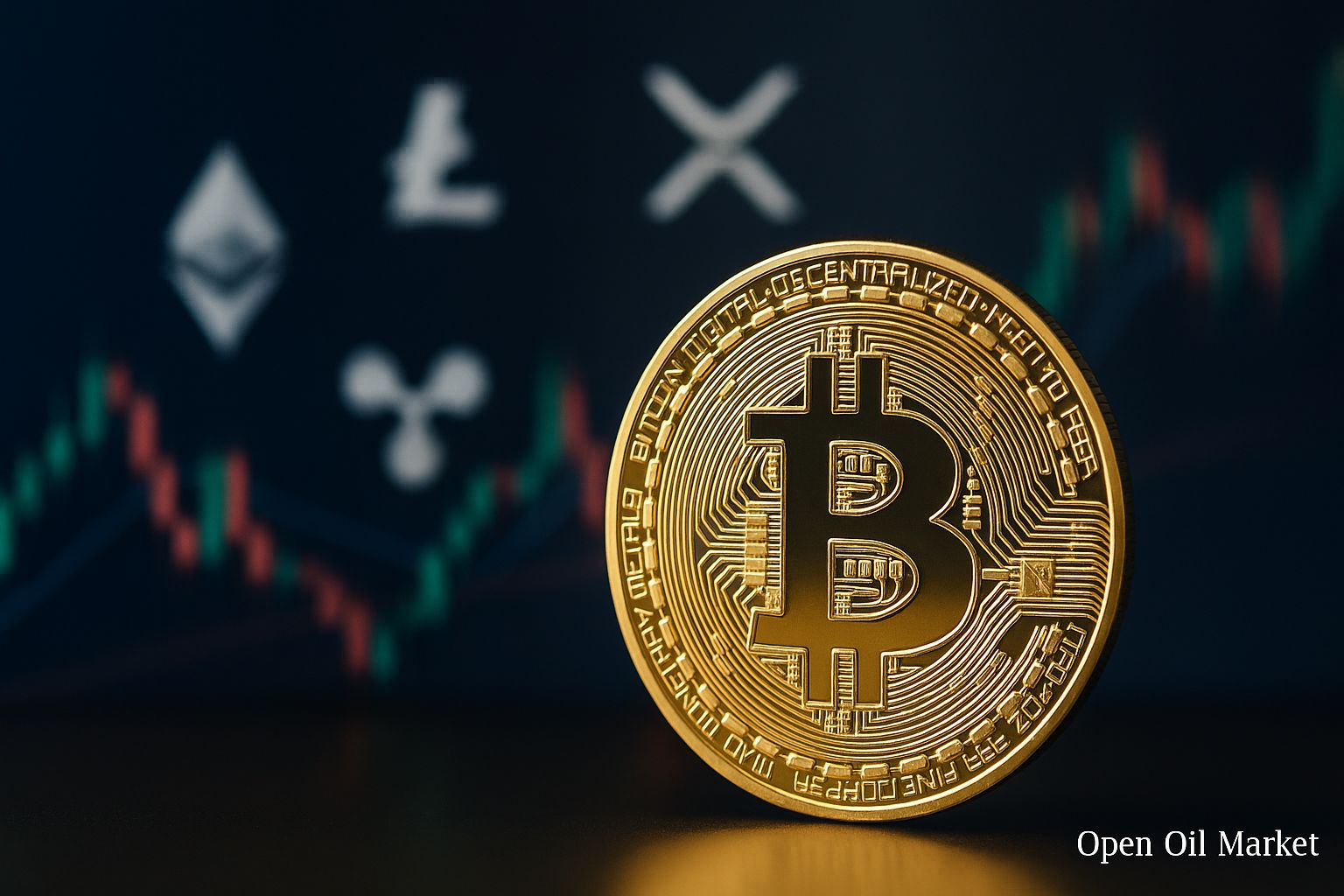
Current Cryptocurrency News as of 6 November 2025: Bitcoin Stabilises Around $110,000 After Recent Correction, Ethereum Prepares for Major Network Upgrade, and the Altcoin Market Shows Mixed Dynamics. Institutional Investors Maintain High Interest, While Regulators Worldwide Are Formulating New Rules for the Industry. The Review Also Presents the Current Top 10 Largest Cryptocurrencies by Market Capitalisation.
As of the morning of 6 November 2025, the global cryptocurrency market remains at high levels despite increased volatility in recent weeks. Bitcoin, after reaching new price peaks this autumn, has corrected and is currently consolidating around the $110,000 mark, which is substantially higher than levels seen at the beginning of the year and supports investor optimism. Many leading altcoins have also seen significant growth over the past few months. In these conditions, regulatory news and signals from monetary policy are increasingly influencing the market: decisions from central banks and legislative initiatives in various countries are significantly impacting the industry. Below, we will take a detailed look at the current situation — from Bitcoin and Ethereum's dynamics to institutional investors' actions and regulators' steps.
Bitcoin: Holding Key Positions
The flagship Bitcoin (BTC) recently updated its all-time high, exceeding $125,000, after which it experienced a predicted correction. At the beginning of November, the price temporarily dipped to around $105,000; however, it soon stabilised near $110,000. This area acts as important support: maintaining BTC above approximately $105,000 keeps the upward trend intact. The nearest resistance zone is around $120,000 — a confident breakthrough above this level would pave the way for Bitcoin to reach new records.
The factors that sparked the BTC rally remain in place. Investors are anticipating a swift easing of monetary policy in the US: it is expected that in 2025-2026, the Federal Reserve will begin to lower interest rates, which traditionally boosts demand for riskier assets, including cryptocurrencies. Institutional players continue to increase their investments through exchange-traded funds (ETFs) and other products. Regulators are also sending positive signals to the industry. At the same time, risks remain: an unexpected rise in inflation or a sharp tightening of the Federal Reserve's rhetoric could temporarily cool appetite for digital assets. For instance, at the end of October, stringent comments from the Fed prompted a short-term outflow of funds from crypto funds and a decline in BTC prices; however, buyers quickly returned the price to previous levels.
Overall, Bitcoin is demonstrating resilience. Long-term holders are in no rush to sell their coins, perceiving BTC as "digital gold" and a hedge against inflation. Major companies and funds continue to accumulate Bitcoin — during the recent price declines, they added thousands of BTC to their balances, taking advantage of the pullback. This influx of capital from "big players" supports the market and indicates that the current bullish cycle is far from over.
Ethereum: Upward Trend Ahead of the Upgrade
The second-largest cryptocurrency by market capitalisation, Ethereum (ETH), has been consistently rising alongside the market in 2025. Earlier this week, the ETH price was holding around $4,000, although it briefly dipped below $3,600 in early November amid the overall correction. Currently, Ethereum is trading in the range of approximately $3,800 to $4,000, with its market capitalisation exceeding $450 billion (about 12% of the market). Despite recent fluctuations, ETH has significantly strengthened since the beginning of the year and is close to multi-year highs (the all-time peak of approximately $4,867 was recorded in 2021).
The rise in Ethereum is supported by both high institutional demand and fundamental factors. This year, investors have been pouring unprecedented amounts into funds and ETFs based on Ethereum, with the inflow of funds into these products surpassing the similar figures for Bitcoin funds. One reason for the optimism is the anticipation of the launch of the first spot ETF on Ethereum in the US: if regulators approve it, access to Ethereum will be expanded to a wider circle of investors, potentially driving the price to a new growth round.
Additionally, the Ethereum ecosystem continues to develop. A significant network upgrade aimed at reducing fees and enhancing security is scheduled for early December — this technological factor is capturing market attention. Overall, Ethereum remains a key platform for thousands of decentralised applications (DeFi, NFTs, etc.), and after transitioning to Proof-of-Stake and implementing a deflationary emission model, many investors view ETH as a promising asset. All of this fuels expectations that Ethereum will soon break the $4,600 mark and approach its all-time maximum.
Altcoin Market: Mixed Trends
The broader altcoin market also showed growth in 2025, although volatility in this segment has increased. Following Bitcoin's rally, investor interest has partially shifted to altcoins, many of which previously experienced sharp price increases followed by corrections. Consequently, the dynamics among leading altcoins are currently heterogeneous: some tokens are holding around multi-year highs, while others have pulled back from their peaks.
For example, XRP surged past $3 (a peak since 2018) following Ripple's legal victory over the SEC; BNB rose to around $850 amid increased activity on Binance; and Solana has maintained about $180, bolstered by the launch of the first ETF. However, some coins (Cardano, Dogecoin) have noticeably declined from their summer highs. Nevertheless, interest in alternative cryptocurrencies remains high, especially in projects with active ecosystems and positive news.
Institutional Interest at Record Levels
Major banks, funds, and corporations have invested unparalleled amounts of capital in digital assets in 2025, leading to a record influx of funds into crypto funds and the launch of exchange-traded ETFs. At the end of October, there was a short-term profit-taking: investors withdrew over $1 billion from spot Bitcoin and Ethereum ETFs, temporarily lowering prices. However, major players soon returned to buying on pullbacks, and the total volume of institutional investments since the beginning of the year is nearing record levels. Such capital inflow creates a solid foundation for the market and reinforces expectations for the continuation of the bullish cycle.
Regulation and Integration: A Global Overview
Regulators worldwide are increasingly establishing rules for the crypto industry. In the US, steps are being taken to form a comprehensive legal framework: Congress is discussing legislation on digital assets, while the new SEC leadership is softening its approach (court disputes with exchanges are being resolved, and clear criteria for tokens are being developed). In the European Union, the Markets in Crypto-Assets (MiCA) regulation has come into force, introducing uniform requirements for the operation of crypto exchanges, wallets, and token issuers.
Other regions are also integrating cryptocurrencies. China is utilising the financial platform of Hong Kong to launch its first regulated stablecoins pegged to the yuan; in Latin America, Brazil's parliament is discussing the idea of including Bitcoin in national reserves (up to 5%); in Russia, internal control is being strengthened (banks are blocking suspicious cryptocurrency transactions, and measures against illegal transactions are being intensified) while simultaneously developing a digital rouble (launch expected in 2026). Thus, states are progressively integrating digital assets into the financial system through clear rules, reducing risks for investors and recognising cryptocurrencies as part of the global economy.
Top 10 Most Popular Cryptocurrencies
- Bitcoin (BTC) — ~$110,000 (≈55% market share). The first and largest cryptocurrency. Limited issuance (21 million coins) gives BTC characteristics of digital gold. Used as a means of saving; demand remains high.
- Ethereum (ETH) — ~$4,000 (≈13% market share). Leading smart contract platform (the foundation of DeFi and NFTs). The transition to PoS and a deflationary emission model has strengthened ETH's position as a high-tech asset.
- Tether (USDT) — ~$1.00. The largest stablecoin, pegged to the US dollar. A key source of liquidity in the crypto market, allowing for quick "parking" of capital between transactions.
- Binance Coin (BNB) — ~$800. Token of the Binance exchange ecosystem (BNB Chain). Used for paying fees, accessing services, and participating in DeFi projects. Despite regulatory pressure, BNB remains in the top 5 due to its wide application.
- USD Coin (USDC) — ~$1.00. The second-largest stablecoin (issued by Circle and Coinbase). Fully backed by dollar reserves and regularly audited, making it one of the most reliable digital assets.
- XRP (Ripple) — ~$3.00. Token of the Ripple network for fast international transfers. In 2025, XRP surpassed $3 for the first time since 2018, thanks to Ripple's victory over the SEC and expectations of an ETF launch. Attracts banks and funds as an efficient tool for cross-border settlements.
- Solana (SOL) — ~$180. Layer one blockchain known for its high transaction speed and low fees. SOL rose sharply in value due to the expansion of its ecosystem (DeFi, NFT) and the launch of the first ETF based on Solana.
- Cardano (ADA) — ~$0.80. Blockchain platform with a PoS algorithm and a scientific approach to development. Although ADA's price is far from its record levels, the coin remains in the top 10 due to its large market capitalisation and active community.
- Dogecoin (DOGE) — ~$0.22. The most famous meme cryptocurrency, which has become one of the largest by market capitalisation. Used for micropayments and internet tips. Thanks to its loyal community and periodic surges in hype, DOGE retains its place among the leaders, although it is characterised by high volatility.
- TRON (TRX) — ~$0.35. Token of the Tron platform, focused on decentralised services and content. Strengthened on the back of increased use of the network for stablecoins and asset tokenisation. Low fees and high throughput have helped Tron enter the top ten largest coins.
In conclusion, as of 6 November 2025, the cryptocurrency market is exhibiting mixed dynamics. Fundamental factors and the inflow of institutional capital remain positive, and the largest coins are holding key levels. However, short-term economic and regulatory uncertainty is prompting investors to exercise caution. In the coming days, it is important for market participants to monitor the movements of major cryptocurrencies and news regarding potential new ETF launches to respond promptly to changes in trends.




